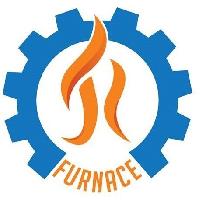Batch Type Furnaces: Precision Heat Treatment for Flexible Industrial Needs

Posted by jrfurnace
from the Business category at
25 Jul 2025 11:04:43 am.
batch type furnaces
play a pivotal role in ensuring consistent and high-quality results across a wide range of metalworking applications. Whether it’s annealing, hardening, tempering, normalizing, or stress relieving, batch furnaces provide the flexibility and control needed for diverse treatment processes. Their design and functionality make them suitable for industries such as automotive, aerospace, tool manufacturing, general engineering, and heavy fabrication.
What is a Batch Type Furnace?
A batch type furnace is a closed thermal processing unit where materials are treated in discrete batches rather than in a continuous flow. Components are loaded into the chamber, processed under controlled heating cycles, and then unloaded. This type of furnace offers precise thermal control and uniform temperature distribution, which are essential for ensuring metallurgical accuracy in critical applications.
Unlike continuous furnaces, batch furnaces offer greater flexibility in treating different sizes, shapes, and grades of materials. They are especially useful when production volumes vary or when frequent product changeovers are necessary.
Key Features of Batch Type Furnaces
Precision Temperature Control: Equipped with programmable logic controllers (PLC) or digital control systems to maintain accurate temperature cycles and soak times.
Atmosphere Control Capability: Can be operated under vacuum, inert gases, or other controlled atmospheres depending on the application.
Multiple Heating Methods: Compatible with electric, gas-fired, or oil-fired heating systems depending on plant infrastructure and energy preferences.
Flexible Design: Available in a range of configurations, including box type, bogie hearth, pit type, and top-hat style to suit different materials and processes.
Robust Insulation: Ensures minimal heat loss and energy efficiency with ceramic fiber or refractory-lined walls.
Versatility: Suitable for small to medium production runs, making them ideal for job shops and custom fabrication.
Process Control: Offers full control over temperature ramps, hold times, and cooling cycles.
Uniform Heating: Engineered for even temperature distribution to avoid hotspots and ensure consistent treatment.
Ease of Operation: Simple loading/unloading procedures and user-friendly control systems.
Low Maintenance: Well-designed insulation and mechanical systems reduce wear and tear, increasing operational lifespan.
Batch type furnaces are used across industries for various metallurgical treatments. Some of the most common applications include:
Annealing: Softening metals like steel, aluminum, and copper to improve ductility and machinability.
Tempering: Enhancing toughness in hardened steels by reducing brittleness.
Stress Relieving: Removing internal stresses developed during forming or welding.
Hardening: Increasing the surface or core hardness of steels and alloys.
Normalizing: Refining grain structure and improving uniformity in forged or cast parts.
Simple in design, they have a rectangular chamber with front or top loading. Ideal for small parts and light components.
2. Bogie Hearth Furnaces
Feature a movable hearth (or bogie) for loading heavy components like dies, shafts, and large fabricated assemblies.
3. Pit Type Furnaces
Designed for vertical loading of long components such as shafts or coils. Heating occurs from the side or base.
4. Bell Type Furnaces
Have a movable heating hood or bell placed over the workload. Used where atmosphere control and surface protection are critical.
Energy Efficiency and Control
Modern batch furnaces come equipped with energy-saving features such as:
Insulated doors with tight seals
to reduce heat loss
Heat recovery systems
to reuse waste heat
Zone-wise temperature regulation
to fine-tune heating in different areas of the chamber
Real-time data logging
for process monitoring and traceability
These features help reduce operating costs while maintaining the highest standards of metallurgical performance.
Challenges and Considerations
While batch type furnaces offer numerous benefits, certain operational considerations must be managed:
Cycle Time: Each batch requires heating and cooling time, which may impact throughput for high-volume operations.
Labor Involvement: Manual loading and unloading can be labor-intensive unless automated systems are in place.
Space Requirements: Large batch furnaces require adequate floor space for operation and maintenance access.
However, with the integration of
automation, IoT controls, and energy optimization
, many of these challenges are being effectively addressed in modern furnace designs.
Conclusion
Batch type furnaces
remain a reliable and efficient solution for industries needing versatile and precise heat treatment solutions. Their ability to handle varied workloads, combined with their temperature accuracy and ease of customization, makes them an indispensable asset in metalworking and manufacturing sectors. As technologies continue to evolve, batch furnaces are becoming smarter, more energy-efficient, and even more indispensable in industrial production environments.
0 Comments



